Thuringian Colour Pigeon: Breed Guide
Looking for your first pigeons to breed and raise? Then you should check out the Thuringian Color pigeons.
Thuringian color pigeons are fancy birds for show and exhibition purposes, but they can also be great pets.
Currently, there are many variations of this pigeon worldwide. However, these pigeons have unique characteristics that make them attractive to experienced fanciers.
Sounds interesting? Then stick around to learn more about this pigeon breed, how to care for them, and how to breed them successfully!
Thuringian Color Pigeons Profile
| Name | Thuringian Color Pigeons |
|---|---|
| Scientific Name: | Columbia livia |
| Origin: | Germany |
| Size: | Medium |
| Weight: | 400 grams |
| Lifespan: | 6 to 10 years |
| Physical Features: | Curved heads, colored eyes, medium-sized beaks, large breasts, long backs, lengthy wings, extensive tails, and fancy plumage |
| Temperament: | Good after getting used to the nesting place |
| Special Features: | Diverse colors and markings |
| Breeding and Maintenance: | Easy |
| Common or Popular Varieties: | Thuringian Breast Thuringian Mon Thuringian Shield Thuringian Whitetail Thuringian Spot |
Looking for more articles about pigeon breed:
Overview
As a fancy bird, the Thuringian Color pigeon is a pigeon primarily developed for shows, exhibitions, and competitions.
It originated in Germany and has found a home in many other countries worldwide since then.
History and Origins of Thuringian Color Pigeons
The Thuringian Color pigeon originated in Thuringia (Germany) and has been a popular domestic bird in Germany since 1876.
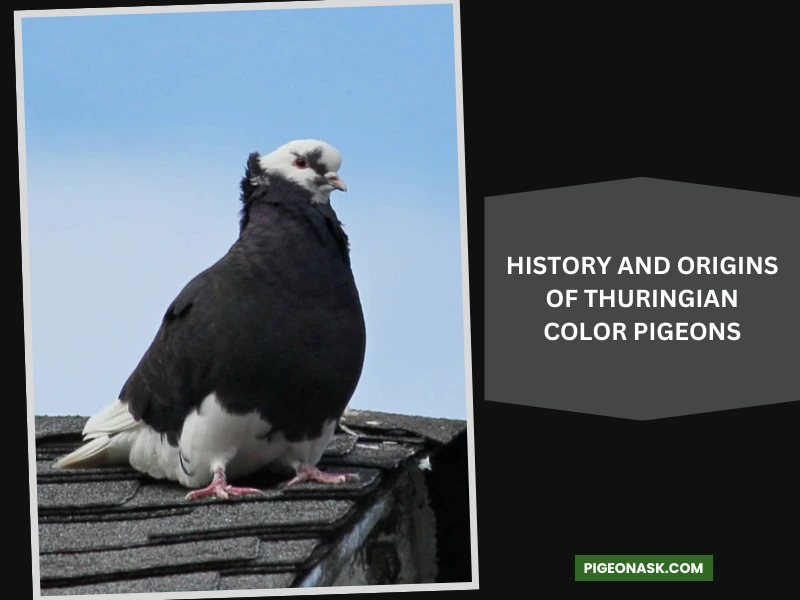
This bird is a descendant of the wild rock pigeon, developed after years of selective breeding. Since then, the Thuringian Color pigeons have spread to more countries worldwide.
Physical Characteristics and Features
Learn how to identify this type of pigeon by discovering their physical traits.
Body Structure, Size, and Weight
Thuringian Color pigeons are medium-sized birds that can weigh up to 400 grams. These pigeons have curved heads, colored eyes, and a medium-sized beak.
The breasts of these pigeons are large and well-rounded, and the back is long and slightly angled. Similarly, the wings are long and large, covering the back of the Thuringian Color pigeon.
Additionally, the tails are large, the paws are medium length, and the pigeons have well-developed plumage.
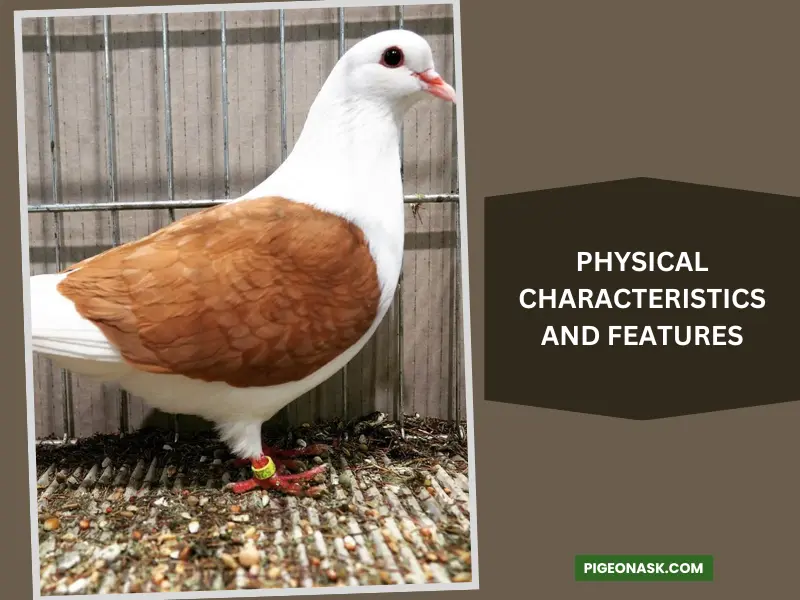
Unique Features
This pigeon breed has unique characteristics like diverse colors and specific markings. Another particular feature is that these birds can have a plan or shell crested and clean-legged builds.
Common Variation
Multiple varieties of the Thuringian Color pigeons exist, including the Thuringian Breast, Thuringian Monk, and Thuringian Shield. Some other more popular variations are the Thuringian Whitetail and Thuringian Spot.
Behavior and Traits of Thuringian Color Pigeons
This section contains everything you need to know about the behavior of this pigeon and other things to consider when you’re raising it.
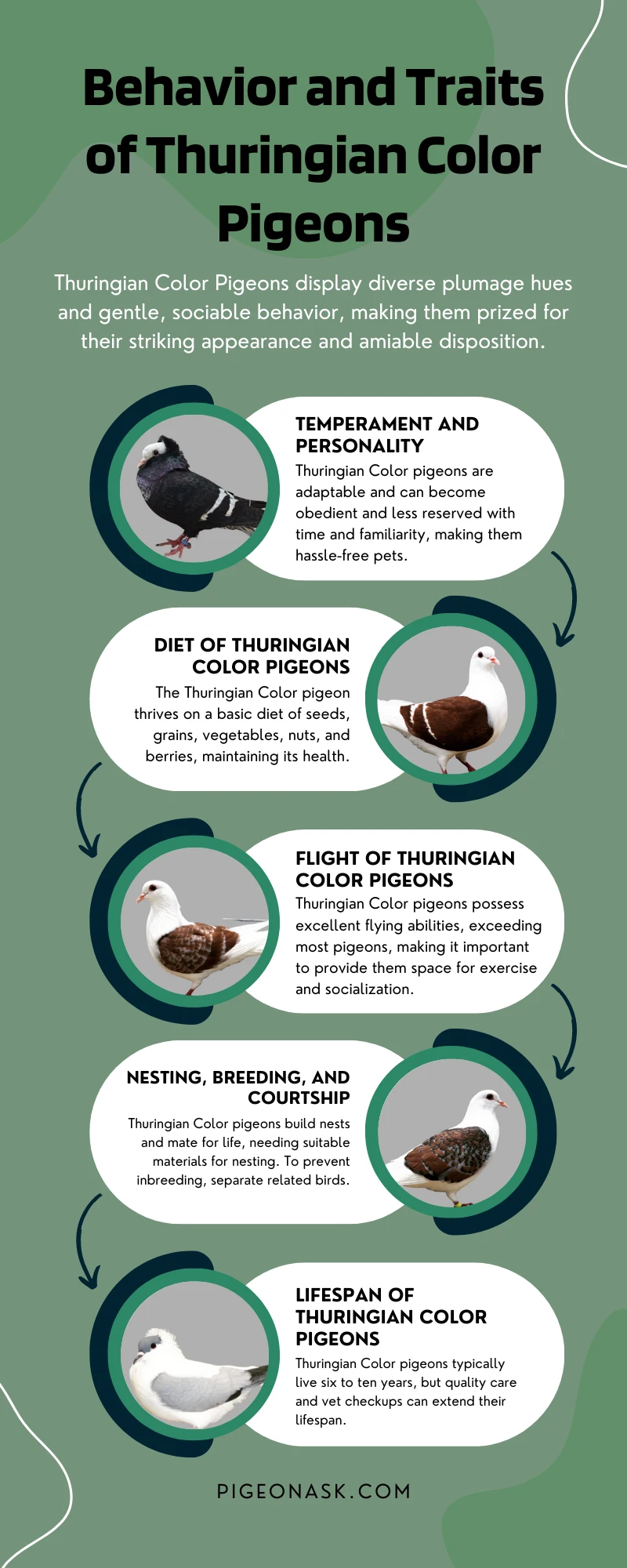
Temperament and Personality
Thuringian Color pigeons are hassle-free birds that adapt to the environment around them. Also, this pigeon breed usually sits tight on the nest and can get used to human owners over time.
These characteristics make these pigeons reserved but obedient once they get used to their surroundings and feel comfortable.
Diet
The Thuringian Color pigeon requires a standard diet. You can feed these birds food like seed mix, grains, seeds, millet, wheat, and corn.
Furthermore, you can complement the diet by including fresh veggies and peas. Nuts and berries are also good. All of these ingredients constitute a healthy diet for this bird.
Flight
The Thuringian Color pigeons can fly long distances, showing a flight ability above the average pigeon.
For this reason, it’s necessary to create conditions and allow these birds to open their wings and fly around for exercise and socializing.
Nesting, Breeding, and Courtship
Like other pigeons, the Thuringian Color pigeon builds a nest to care for their eggs. Therefore, you must provide materials like straws and leaves to ensure they have everything to create the nest.
The breeding phase is similar to what other birds experience. During the breeding season, the male will court the female with noises and bodily displays. If the female feels attracted, both pigeons will form a pair and mate for life.
You must avoid problems like inbreeding by separating related males and females. This way, you will prevent genetic issues and guarantee the desired outcome.
Lifespan
The average lifespan of the Thuringian Color pigeon is between six and ten years. This estimate will depend on factors like the environment, food quality, and health of the birds.
Regular maintenance and periodic checkups by a vet will guarantee your pigeons live longer.
Breeding and Maintenance
Maintaining this page and preserving its health is pretty straightforward and doesn’t require complicated measures.
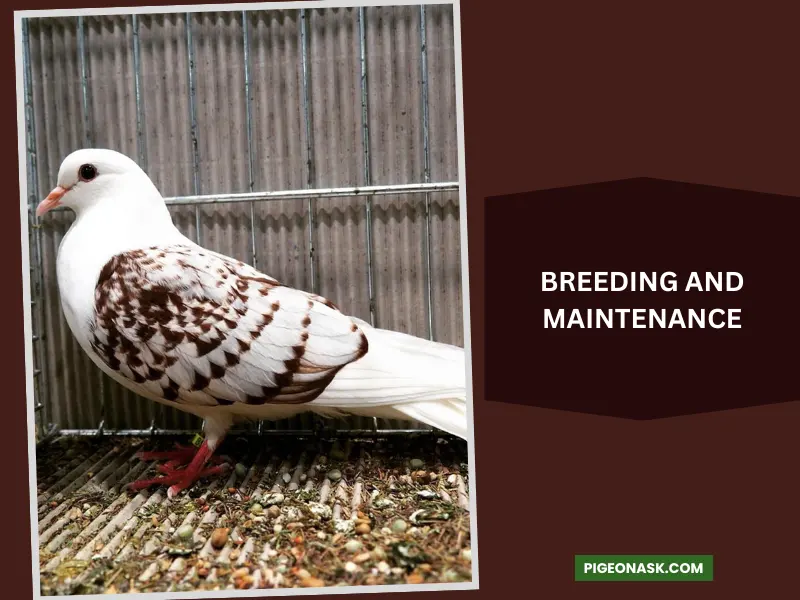
Ideally, you shall clean the housing to prevent the accumulation of droppings that could affect the pigeon’s health. Likewise, a water bowl is essential to hydrate and clean the birds.
Some Tips and Considerations for Successful Breeding
Check out the following tips to improve your likelihood of breeding Thuringian Color pigeons successfully.
- Choose a breeding pair with the correct characteristics to ensure the desired offspring.
- Get your pigeons from a renowned provider. Avoid buying birds from shady or suspicious sellers to avoid flaws or genetic issues.
- Monitor the eggs to confirm their development and identify any problems.
- If you notice any signs of appetite loss or other physical issues, remove it and have a veterinarian check it.
- These pigeons can breed multiple times yearly, but you don’t want to force them. Otherwise, the pigeons may experience stress.
Feeding and Housing Requirements
Feed your Thuringian Color pigeons early in the morning by providing a considerably sized portion of food.
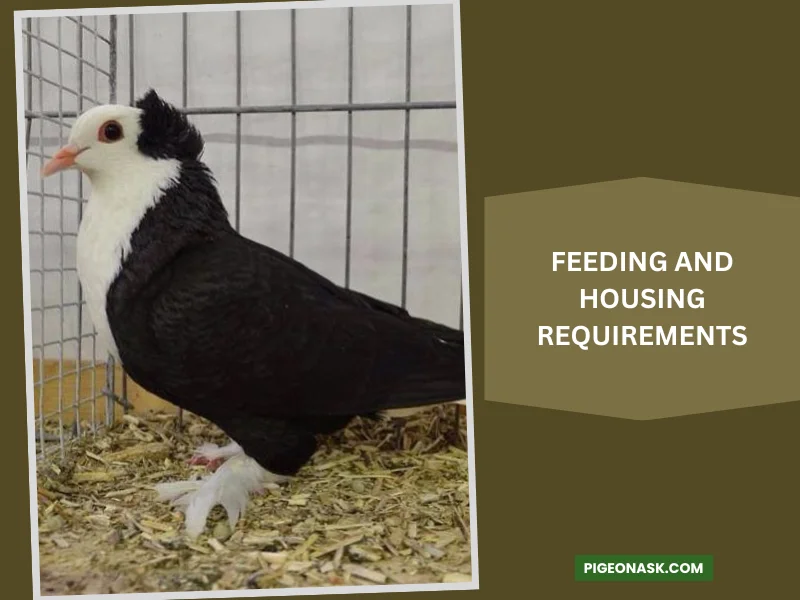
This amount of food should last for the day, and the pigeons shall eat it all by sunset. Resupply the food the following morning and provide more if you notice the previous ration wasn’t enough.
Housing
The housing for Thuringian Color pigeons should be spacious enough that they can walk and flap their wings. You can create an aviary and introduce a nesting box if you consider it necessary.
Additionally, adding branches and lofts could be a good idea to motivate the pigeons to be more active.
Final Word
Good-looking, entertaining, and easy to breed and raise. What’s not to love about Thuringian Color pigeons?
It’s an incredible breed of pigeon for fanciers, especially newer ones looking for alternatives to start their careers.
Did you like this article on Thuringian Color pigeons? Come follow us on our social media at Facebook, Twitter, and Pinterest to keep you updated with birds and more topics.
